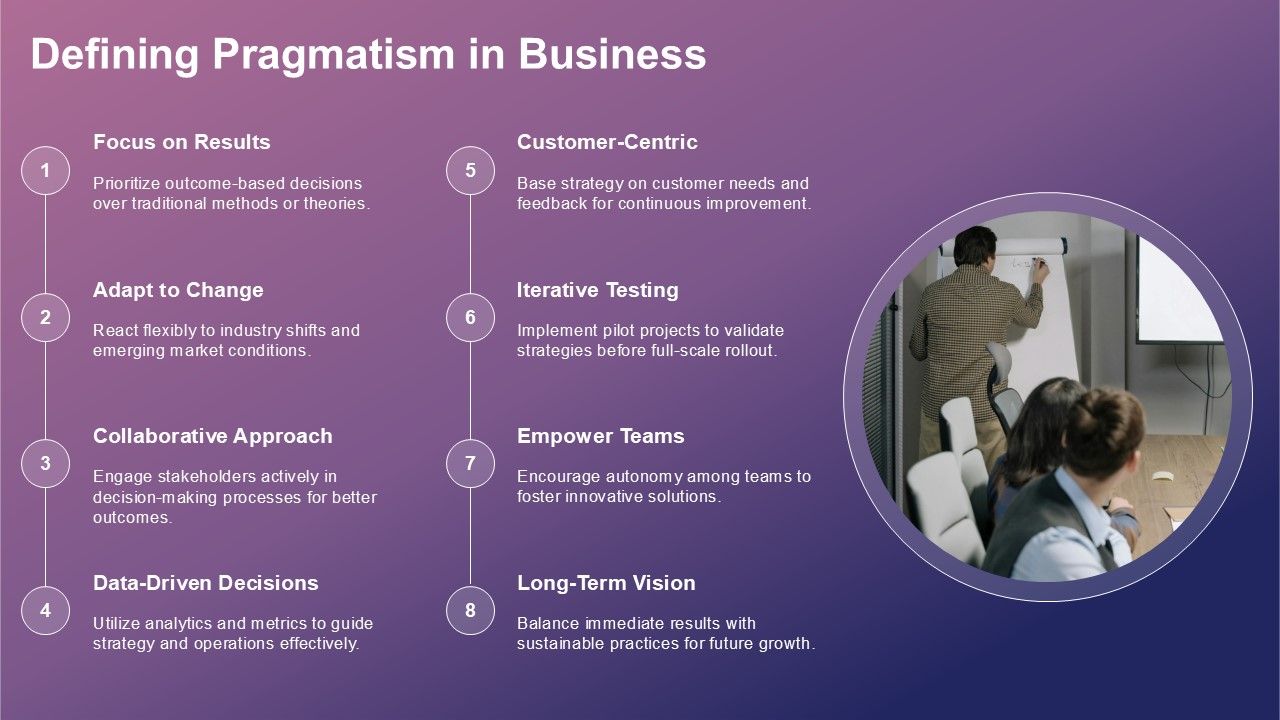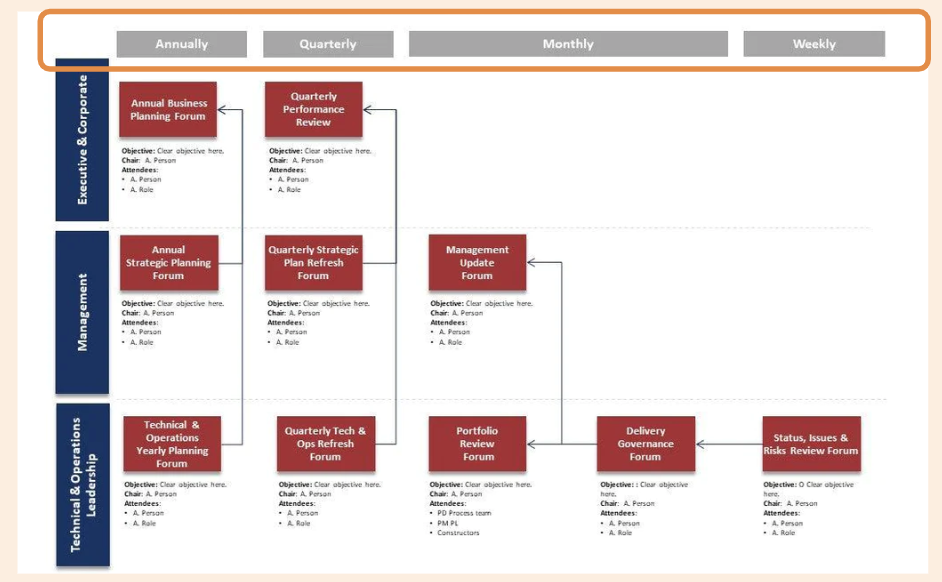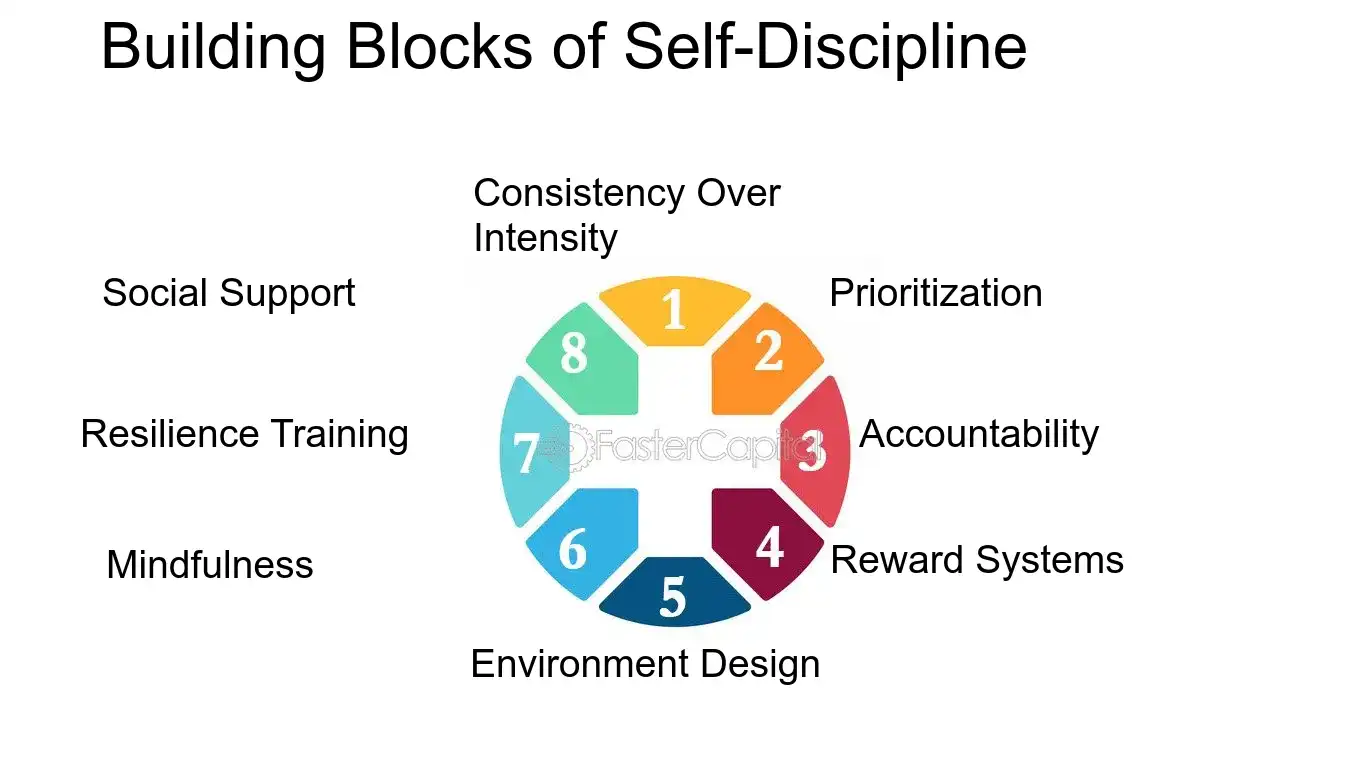Building a successful business is often pictured as a neat linear journey from idea to IPO. In reality, growth is an iterative dance between bold vision and grounded pragmatism. Leaders who can hold both simultaneously — the aspirational horizon and the immediate, measurable steps — unlock exponential value. This article explores how vision and pragmatism interact, why both are essential, and practical ways to balance them for sustainable growth.
Why Vision Matters: The North Star of Growth
A clear, compelling vision is the magnetic force that aligns people, capital, and strategy. It answers the question: Where are we going, and why does it matter?
The functions of vision
- Direction-setting: Vision gives long-term orientation so daily choices ladder up to larger objectives.
- Inspiration and recruitment: A bold vision attracts talent who want to be part of something bigger than themselves.
- Differentiation: Vision creates a unique identity in crowded markets, turning features into meaning.
- Risk tolerance: When the outcome is compelling, stakeholders are more willing to accept short-term sacrifices.
Characteristics of an effective vision
- Clear but flexible: It should be specific enough to guide decisions yet flexible enough to adapt to new information.
- Future-focused: It envisages a transformed market, customer behavior, or company capability.
- Emotionally resonant: People remember and act on stories that connect to values and identity.
- Actionable through milestones: Even the loftiest visions break into measurable interim goals.
Why Pragmatism Matters: Turning Vision into Reality
While vision creates the destination, pragmatism builds the road. Pragmatism is the practice of prioritizing feasibility, evidence, and resource constraints — the world of budgets, experiments, metrics, and incremental improvements.
The functions of pragmatism
- Risk mitigation: Pragmatic thinking prevents catastrophic choices by testing assumptions early.
- Operational efficiency: It optimizes processes, technology, and resource allocation to keep the business functioning.
- Customer focus: Pragmatism forces you to listen to market feedback and iterate.
- Capital discipline: It ensures spending aligns with validated value propositions rather than untested hypotheses.
Hallmarks of pragmatic decision-making
- Data-driven: Decisions lean on metrics, experiments, and customer insights.
- Iterative: Rather than “bet the company” moves, pragmatism favors small, reversible tests.
- Cost-aware: It considers opportunity cost and runway, especially for startups.
- Operationally realistic: Strategies are mapped to actual capabilities and timelines.
The Tension — And Why It’s Healthy
The friction between vision and pragmatism isn’t a sign of conflict; it’s a sign of balance. Without vision, pragmatism becomes short-sighted and reactive; without pragmatism, vision becomes fantasy.
Common tensions
- Speed vs. quality: Vision demands speed to capture opportunity; pragmatism demands careful testing to avoid failure.
- Innovation vs. efficiency: Radical ideas require room to fail; operational demands push for tight cost controls.
- Long-term growth vs. short-term metrics: Investors and boards often want quarterly improvements while founders chase multi-year transformation.
How to convert tension into productive friction
- Create dual operating rhythms: Run long-term strategy sessions alongside short-term execution sprints.
- Use different KPIs for different horizons: Track leading indicators for long-term initiatives and lagging metrics for operational health.
- Establish “safe to fail” experiments: Allow teams to try high-vision ideas within bounded budgets and timelines.
Frameworks to Balance Vision and Pragmatism
Here are practical frameworks leaders use to keep visionary ambition and pragmatic execution in productive alignment.
1. Three-Horizon Framework
- Horizon 1: Core business — optimize, defend, and generate cash.
- Horizon 2: Adjacent opportunities — extend current capabilities into new areas.
- Horizon 3: Moonshots — long-term bets that redefine the company.
Allocate resources across these horizons intentionally. Use cash from Horizon 1 to underwrite experimentation in Horizon 3 while maintaining tight gates for escalation.
2. OKRs (Objectives and Key Results) with Stage-Gated Execution
- Set aspirational Objectives (vision-driven).
- Define measurable Key Results (pragmatic).
- Add stage gates: Predefined criteria for moving from prototype to scale. This prevents vision projects from bleeding resources without validation.
3. Dual-Track Development
- Discovery track: Quick experiments, customer interviews, prototypes (vision-oriented testing).
- Delivery track: Robust engineering, scalability, regulatory compliance (pragmatism-focused).
Sync these tracks with regular handoffs and shared priorities.
4. Experimentation Portfolio
- Maintain a mix of low-cost pilots, scaled experiments, and major investments.
- Use expected value modeling to weigh probable payoffs against costs and time to realization.
Leadership Practices that Fuse Vision and Pragmatism
How a company’s leaders behave sets the cultural thermostat. Here are leadership routines that mix ambition with realism.
Communicate a coherent narrative
- Paint the long-term vision regularly and translate it into near-term priorities. Repetition builds alignment.
Model evidence-based optimism
- Leaders should champion bold ideas while demanding data. Language matters — frame experiments as learning investments rather than pure bets.
Empower informed autonomy
- Give teams decision-making authority but require accountable measurable outcomes. Autonomy speeds innovation; accountability keeps it grounded.
Create institutional memory for experiments
- Document outcomes of tests — successes and failures. That history prevents repeated mistakes and accelerates future validation.
Organizational Structures that Support the Balance
Structures shape behavior. Below are organizational choices that help maintain the interplay.
Innovation hubs or skunkworks
- Small, cross-functional teams dedicated to high-vision projects insulated from daily operational pressures. These teams must still report clear milestones.
Rotational leadership programs
- Rotate leaders between growth/strategy roles and operational roles. This fosters empathy for both perspectives and improves decision quality.
Cross-functional councils
- A council with finance, product, marketing, operations, and R&D that evaluates investment requests against strategic vision and operational feasibility.
Practical Playbook: Steps to Implement Today
Below is a tactical checklist leaders can use right away.
- Audit current initiatives: Categorize projects into the Three Horizons. Rebalance resources if too skewed toward short-term firefighting.
- Introduce a “validated learning” requirement: For any project beyond a certain budget, require a learning milestone (customer interviews, MVP results, A/B data).
- Set dual KPIs: Each team must own a short-term operational KPI and one long-term strategic KPI.
- Quarterly “Vision Review”: Review progress on horizon 2–3 experiments and decide whether to scale, pause, or kill.
- Allocate a fixed innovation fund: A predictable pool for experiments prevents politics and makes funding decisions data-driven.
- Teach experimental design: Train teams on hypothesis-driven testing and effect-size estimation so experiments provide meaningful answers.
- Reward learning, not just success: Recognize teams that produce rigorous, unbiased learnings even if outcomes were negative.
Cultural Signals That Reveal Whether Balance Exists
Culture is visible in daily rituals and incentives.
Positive signs
- Teams transparently share failures with learnings.
- Hiring messages emphasize both ambition and delivery excellence.
- Resource allocation is deliberate, not reactionary.
Warning signs
- Premature scaling of unvalidated products.
- Overemphasis on metrics that favor short-term optics (e.g., vanity metrics) at the expense of product-market fit.
- Leaders who change strategy frequently without data-backed reasoning.
Common Mistakes and How to Avoid Them
- Mistake: Vision without milestones — Fix: Break big goals into quarterly, measurable milestones with clear owners.
- Mistake: Pragmatism disguised as conservatism — Fix: Ensure risk-averse culture doesn’t become a blocker for experimentation; set explicit evaluation criteria.
- Mistake: Siloed innovation — Fix: Embed product, ops, and finance representation in every innovation project.
- Mistake: Metrics misalignment — Fix: Align incentives across short-term and long-term KPIs so teams don’t game outcomes.
Measuring Success: Metrics that Capture Both Sides
To evaluate how well vision and pragmatism are integrated, measure both output and learning.
Quantitative metrics
- Short-term: Net revenue retention, unit economics (CAC:LTV), operational efficiency ratios.
- Mid-term: Adoption rates of new features, time-to-value for customers, cohort retention.
- Long-term: Market share shifts, breakthroughs in new product lines, strategic partnerships formed.
Qualitative metrics
- Employee sentiment on purpose and autonomy.
- Depth of customer insight informing strategic choices.
- Quality of documented experiments and their learnings.
Closing Thoughts
Achieving durable business growth requires a leader’s willingness to hold a long-term, audacious vision while relentlessly applying pragmatic discipline. Vision without pragmatism is an inspiring story without a blueprint; pragmatism without vision is efficient motion without direction. The most resilient organizations are those that institutionalize mechanisms — structures, metrics, and culture — which allow daring experiments to thrive within boundaries that protect the existing business. When you intentionally design for both, you not only grow — you transform.
FAQ — Frequently Asked Questions
Q1: How can small startups balance bold vision with limited resources?
A1: Prioritize high-impact, low-cost experiments. Use customer interviews and MVPs to validate assumptions early. Allocate a small percentage of budget for visionary experiments and rely on the core business to provide runway.
Q2: What role does company culture play in maintaining balance?
A2: Culture determines whether teams will surface bad news, try uncertain ideas, or focus only on polishing existing processes. A culture that rewards learning and transparent reporting naturally supports both vision and pragmatism.
Q3: How often should a company revisit its vision?
A3: Vision should be stable but not rigid. Revisit it annually or when market signals indicate a meaningful shift. Tactical priorities and roadmaps should be reviewed quarterly.
Q4: Can a company be too pragmatic and harm its long-term prospects?
A4: Yes. Overemphasis on short-term efficiency and proven revenue streams can starve future innovation. Balance by reserving resources and time for long-horizon experiments.
Q5: What governance model prevents visionary projects from draining resources?
A5: Stage-gated governance: projects must pass predefined experimental milestones and business-readiness criteria before receiving scale funding. An independent innovation fund with clear evaluation criteria also helps.
Q6: How should leaders communicate uncertainty to stakeholders while pursuing a bold vision?
A6: Frame uncertainty as managed risk. Share hypotheses, the tests planned, early learnings, and contingency plans. Transparency builds credibility and trust.
Q7: Are there industries where vision should dominate pragmatism, or vice versa?
A7: Highly regulated industries (e.g., healthcare, finance) often require more pragmatism early on due to compliance constraints. Rapidly changing tech sectors may reward visionary bets; however, even then, pragmatic validation remains essential. The key is adjusting the balance to industry dynamics while maintaining the disciplined processes that convert vision into validated value.



